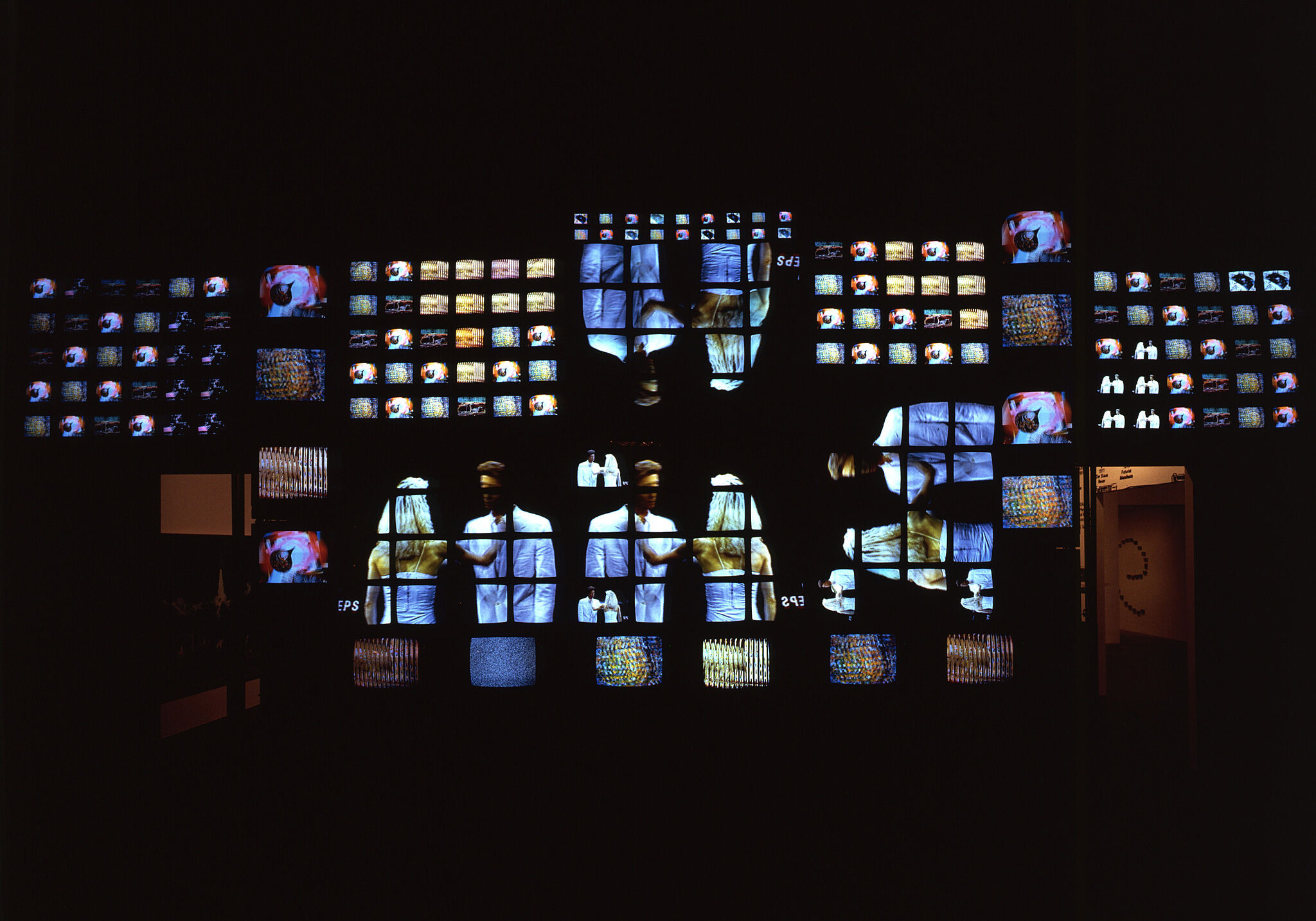Programmed: Rules, Codes, and Choreographies in Art, 1965–2018 | Art & Artists
Sept 28, 2018–Apr 14, 2019
Programmed: Rules, Codes, and Choreographies in Art, 1965–2018 | Art & Artists
Signal, Sequence, Resolution:
Image Resequenced
4
Several of the “programmed” works here reflect on how rules and code are used to rearrange images. Nam June Paik’s massive wall of televisions, Fin de Siècle II, for example, choreographs music videos and “dissolves” the television program into combinations of dancing patterns, providing a different framework to understand broadcasting. Other works resequence images while engaging with such varied subject matter as image processing, interactive storytelling, and political commentary. Steina’s multichannel video installation Mynd investigates the aesthetic effects of software processing, while Lynn Hershman Leeson’s interactive installation Lorna prompts visitors to navigate a branching narrative with multiple endings and the two works from Barbara Lattanzi’s series C-Span x 4 annotate news reportage with subtitles borrowed from a political sci-fi film or karaoke-format song lyrics.
Nam June Paik, Fin de Siècle II, 1989
To create the monumental Fin de Siècle II, Nam June Paik edited and reconfigured sequences from previously broadcast television programs and art videos, drawing out formal commonalities and patterns in seemingly disparate images. He thus liberates the moving images, which include close-up footage of David Bowie’s face and choreography performed by both a human dancer and the schematic outline of one, from their original contexts. Paik used televised programs as his medium but also programmed the work itself to arrange the image sequences in a predetermined composition. Fin de Siècle II reflects how programming saturates and shapes our world, both through media content and through the underlying technological mechanisms that structure and transmit such content.
Paik made this work for Image World: Art and Media Culture, a 1989 Whitney Museum exhibition. Restored with partial replacement of its televisions and processor, Fin de Siècle II is presented in this exhibition at full scale for the first time since then.
Artists
- Josef Albers
- Cory Arcangel
- Tauba Auerbach
- Jonah Brucker-Cohen
- Jim Campbell
- Ian Cheng
- Lucinda Childs
- Charles Csuri
- Agnes Denes
- Alex Dodge
- Charles Gaines
- Philip Glass
- Frederick Hammersley
- Channa Horwitz
- Donald Judd
- Joseph Kosuth
- Shigeko Kubota
- Marc Lafia
- Barbara Lattanzi
- Lynn Hershman Leeson
- Sol LeWitt
- Fang-yu Lin
- Manfred Mohr
- Katherine Moriwaki
- Mendi + Keith Obadike
- Nam June Paik
- William Bradford Paley
- Paul Pfeiffer
- Casey Reas
- Earl Reiback
- Rafaël Rozendaal
- Lillian Schwartz
- James L. Seawright
- John F. Simon Jr.
- Steina
- Mika Tajima
- Tamiko Thiel
- Cheyney Thompson
- Joan Truckenbrod
- Siebren Versteeg
- Lawrence Weiner

